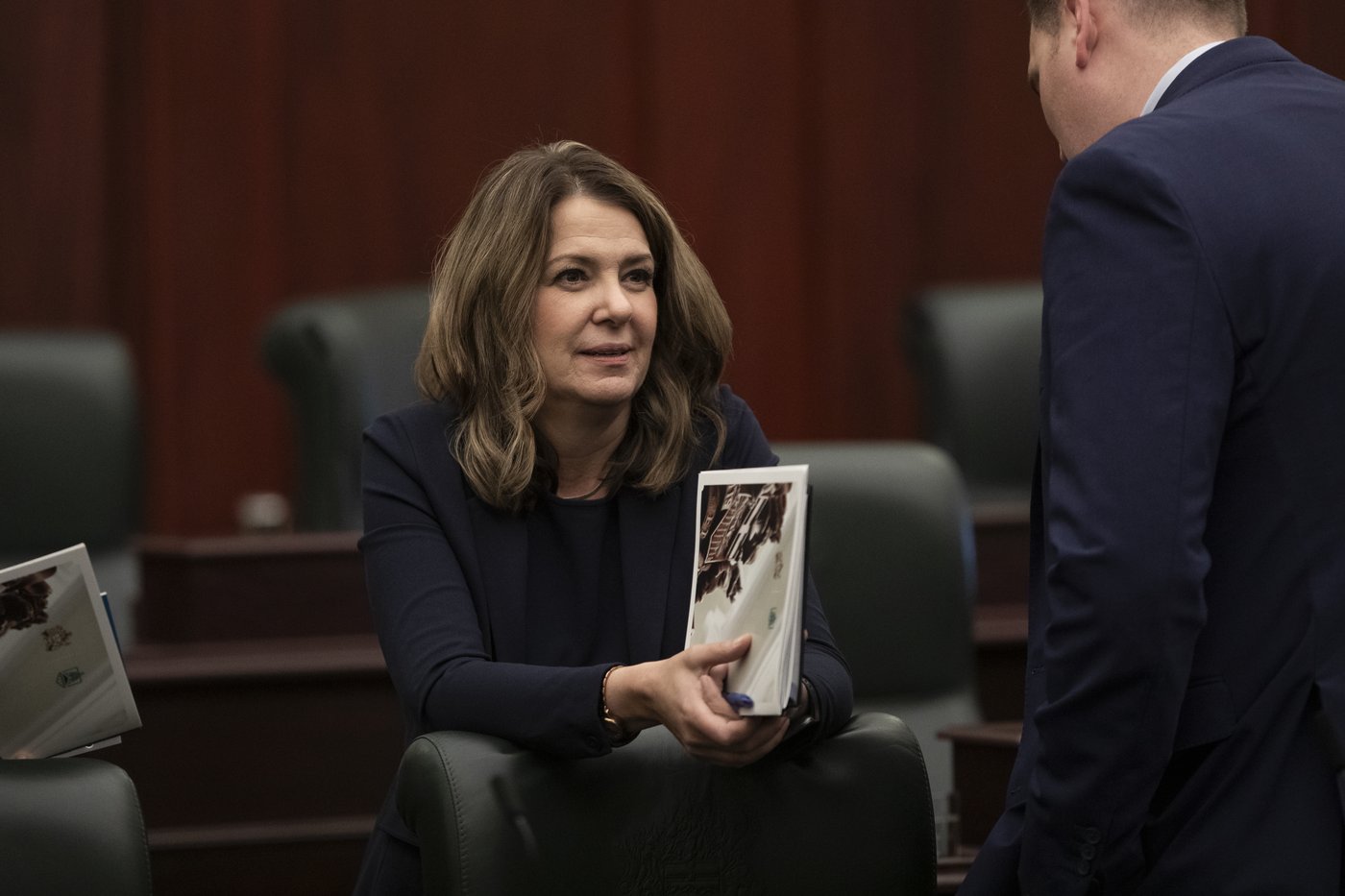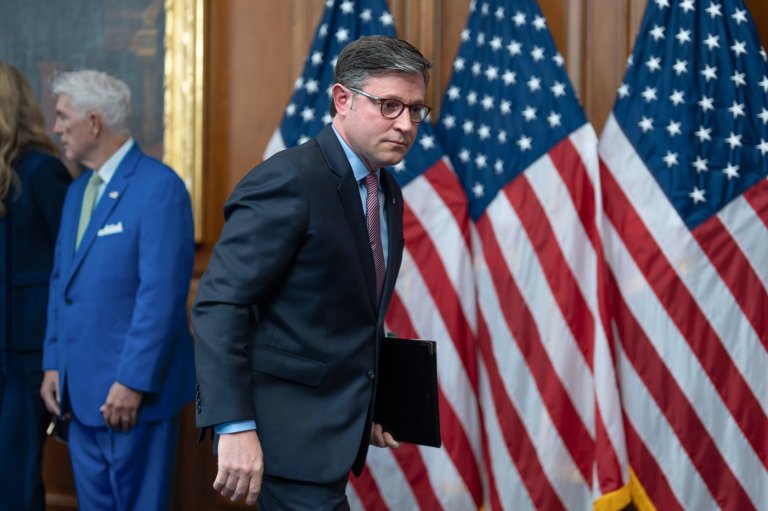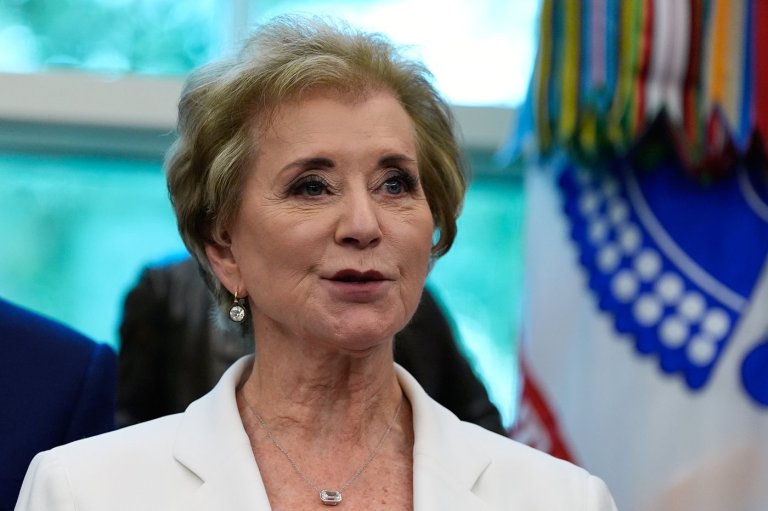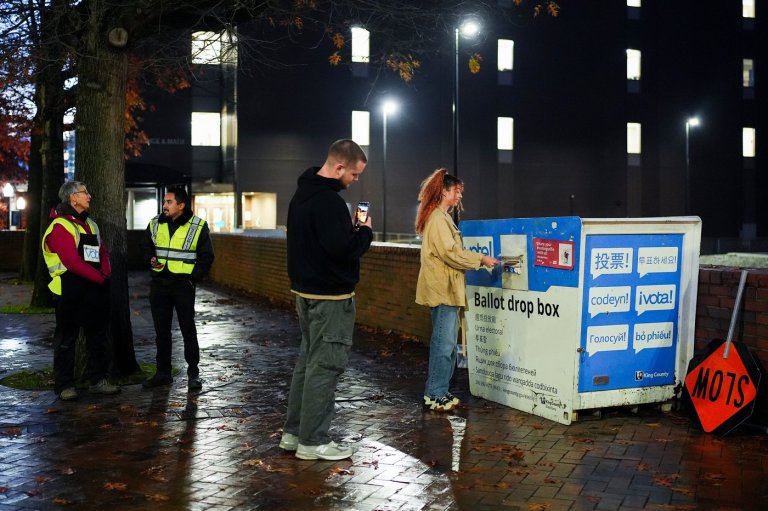Alberta uses Charter’s notwithstanding clause to order striking teachers back to work

EDMONTON — Premier Danielle Smith’s government introduced a bill Monday using the Charter’s notwithstanding clause to order 51,000 striking teachers back to work to end the largest walkout in Alberta history.
If the bill passes, students would be back in classes Wednesday, and Smith has promised fast-tracked passage in the house.
The move puts Smith’s government on a potential collision course with more than 350,000 workers in other provincial unions, which promised an “unprecedented response” if the government invoked the clause to override teachers’ constitutional rights to assemble.
Some teachers and supporters were in the legislature chamber gallery and there were shouts of “Shame!” as Finance Minister Nate Horner formally introduced the bill.
Smith earlier told reporters the size of the strike and the need for ongoing labour stability in schools required the clause, which overrides Charter rights for up to five years.
“This is a very unique situation we find ourselves in. This is a unique strike. We’ve never had 51,000 workers off the job at the same time,” Smith said.
“I do not think people should indicate any broader type of approach (using the notwithstanding clause) when it comes to labour action.”
Smith said the strike has already affected the more than 740,000 students out of schools since it began Oct. 6. They are suffering from not learning in classrooms and missing their classmates and teachers, she said.
“It’s not fair,” Smith said.
Under the bill, the Alberta Teachers’ Association and its members would face hefty fines if they don’t comply: up to $500 a day for individuals and $500,000 a day for the union.
It would also impose a collective bargaining agreement previously put forward by the union and the province, which rank-and-file teachers overwhelmingly rejected in a vote. Teachers would receive a 12 per cent wage hike over four years, with a promise to hire 3,000 more teachers and 1,500 more educational assistants.
Jason Schilling, head of the Alberta Teachers’ Association, said the union’s executive council will meet soon to determine next steps, but said the use of the notwithstanding clause is a black mark and a disturbing precedent.
“This is a sad day for teachers. This is a sad day for Albertans to have a government that is willing to trample on your Charter rights for their own purposes,” Schilling told reporters.
“They should be ashamed of themselves, and they’re not,” he said. “They will use it again on others.”
The bill also overrides protections in the Alberta Bill of Rights and the Alberta Human Rights Act.
Schilling also noted the premier was not in the house when the bill was introduced. Smith had left the legislature to travel to Saudi Arabia for the first leg of a diplomatic tour in the Middle East.
“When this happened, she ran away. She went elsewhere,” he said.
Bernie Dowhan, a Grade 9 teacher in Calgary, was in the chamber gallery, yelling “Shame!” and “Ignorance!” as Horner tabled the bill below.
Dowhan told reporters after that seeing the notwithstanding clause be invoked to shut down the strike was “disappointing, but not surprising.”
“Doing things the proper way doesn’t seem to be resonating with Premier Smith,” he said. “What is happening in the classroom cannot continue anymore.”
The teachers from public, separate and francophone schools walked off the job after the two sides failed to find common ground, mainly on the issue of class sizes and complexity. The union called for immediate action on overcrowded classrooms and lack of supports for students who need specialized care.
Smith has said the issues can’t be solved with a one-size-fits-all approach at the bargaining table, but require a flexible, collaborative approach.
On Monday, she said the legislation wouldn’t address all concerns. She committed to collecting and publicly reporting data on classroom sizes – a measure abandoned by the United Conservatives under former premier Jason Kenney – and to forming a special panel on classroom complexity.
However, the premier called the idea of a class size cap “arbitrary,” arguing it has failed in the past.
Larger labour unrest may be on the horizon.
Late last week, Common Front, a coalition of 30 Alberta unions representing 350,000 workers, issued a statement promising an “unprecedented response” if the notwithstanding clause was invoked.
The group said using the clause is an abuse of process and effectively undermines the leverage unions have in negotiations.
“If governments start using the notwithstanding clause as a tool in their dealings with workers and unions, it will make a mockery of the constitutionally protected right to strike,” it said.
Gil McGowan, president of the Alberta Federation of Labour and the point person for the Common Front, told reporters they are looking at all options, including a strike.
He said they will be meeting Tuesday with affiliated unions and others to finalize a plan they will announce Wednesday.
“If the government puts a gun to the head of the teachers, and they’re not able to continue their strike, then we in the broader labour movement will stand where they’re not able to,” he said.
Smith, asked how she might plan for broader labour unrest for using the notwithstanding clause, said she hopes it doesn’t come to that.
Horner said a larger walkout by the other unions would be illegal. “There’s severe consequences at the labour relations board for those actions,” he said.
Opposition NDP Leader Naheed Nenshi said the government chose to go “nuclear” to get out of a problem it had created.
“Albertans will be forgiven for asking themselves, ‘Who’s next?'” he said. “What rights does this premier want to defend and which ones is she willing to trample over and for whom?”
There’s political precedent for using the notwithstanding clause in an attempt to end labour action.
In 2022, Ontario Premier Doug Ford’s government used it to prevent a court challenge to a bill stopping 55,000 school support workers from going on strike.
They walked off the job on the day the legislation went into effect, shutting down thousands of schools. But public outcry prompted the province to repeal it.
This report by The Canadian Press was first published Oct. 27, 2025.
Join the Conversation!
Want to share your thoughts, add context, or connect with others in your community?
You must be logged in to post a comment.


















